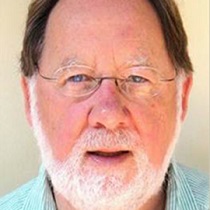- Behaviour
A Neuroscience Perspective on the US Presidential Campaign
Reflections on what is happening to human energy in the US Presidential elections
BRAIN GAIN: During almost three years of its existence, Brain Gain has been variously propounding the view that twentieth century psychology failed completely to establish a real science of human behavior. Having developed as a descriptive rather than an explanatory science psychology had, by the end of the twentieth century, and from a practical use and added value point of view, effectively stalled.
The emerging modern neurosciences in the early twenty-first century offered a different way of thinking about human behaviour in general and organizational behaviour in particular.
It began to be apparent from an increasing understanding of how the brain works that both psychology and management theory in general had missed the (now) remarkably obvious point that humans beings are energy systems. In consequence any organization’s profit statements are measures not only of accounting skill but are also describing the accumulated output of the ways that human energy has been applied within any corporate system.
That being so, some reflections about what is happening to human energy in the US Presidential elections might give a predictive angle of observation.
Superficially, of course, there is an extraordinary waste of energy in the internecine battling that the primaries elicit – paralleled only by the extraordinary amounts of money that fuel the campaigns. But that puts the focus only on the candidates and their political machines. What is happening within the electorate?
Neuroscientist Paul Zak, author of The Moral Molecule, is the lead proponent of the view that oxytocin, the attachment neurochemical, is a key to understanding human behaviour. Writing in Business Insider Tanya Lewis describes Zak’s approach: “In a recent experiment, Zak and his colleagues wired up a group of registered Republicans with sensors that detect their brain waves while they watched the January 14 and January 28 GOP (Republican) presidential debates.”
“During the earlier debate, real-estate mogul Donald Trump scored the highest among the study participants on measures of attention, but low on emotional resonance. None of the candidates scored very high on emotional resonance, either — which might have been because they were all competing for attention.
In the January 28 debate (in which Trump declined to participate), Zak and his colleagues found that Rubio ‘won’ because he earned the highest combination of both attention and emotional resonance. As a result, Zak predicted that Rubio would do well in the (immediately following) Iowa caucuses — which he did, surprising with a strong third-place finish.”
Well, perhaps it comes down to what one might mean by ‘a winning formula’. Perhaps, more importantly, if a surge of oxytocin is (like any other neurochemical) both the result of perception and then cause of behaviour, what if a candidate seeking to become the leader of the world’s most powerful nation somehow tapped into energies within the population that were lying around dormant and unused or unfocused.
Or what if energies were to be released that relied on a much more complex mix of the neurochemicals that control behaviour than oxytocin alone? What if stress chemical cortisol were remarkably persistent in large swathes of the population, some more than others, and Trump’s style and manner happened to release and reduce it in those who had it – though increased it in those (Democrats) who didn’t? If the latter, then Democrats get more vocal and start polarizing the debate, creating the significance for Donald trump that satisfies the cortisol reduction (and perhaps oxytocin generation) of the proposed large swathes?
It is the contention of Brain Gain that Donald Trump is doing something just like that.
Trump is releasing energies that no other contending politician, least of all Hillary Clinton, has the natural skill to release. Immensely skillful as she is, her connecting powers are limited. It is the quality that lost her the Presidential fight against Barack Obama. It will also lose her the fight against Donald Trump whilst he is creating a wave of support that is propelling him not only to becoming the Republican candidate in November’s Presidential election but into the White House.
And if that analysis is anything like correct, the gap between Donald Trump and Hillary Clinton at the final count will be surprisingly large.
Trump himself is, of course, not a simple man. And he may yet run himself into electoral bankruptcy as he has run himself into commercially very tight corners indeed. But he also has bounce-back capacity of an extraordinary kind. It’s the leader who can mobilise the complexity of the brains of others who then harnesses them to whatever advantages are being sought.
So Brain Gain predicts that the next leader of the world’s most powerful nation will be Donald Trump. And this column has been sent to the Editor at 10pm Singapore time on Tuesday 1st March 2016 – long before any results of any kind are in.
In 1979, campaigning for her first election victory, and contemplating the wreckage of an economy that she was about to struggle to transform, Margaret Thatcher said: “All we have in this country is the energies of its people.” Donald Trump somehow knows that too.
ARTICLES YOU MIGHT LIKE
BOOK REVIEW
An authoritative antidote to executive stress, overwhelm, and burnout
DEVELOPING LEADERS QUARTERLY MAGAZINE AND WEEKLY BRIEFING EMAILS

































